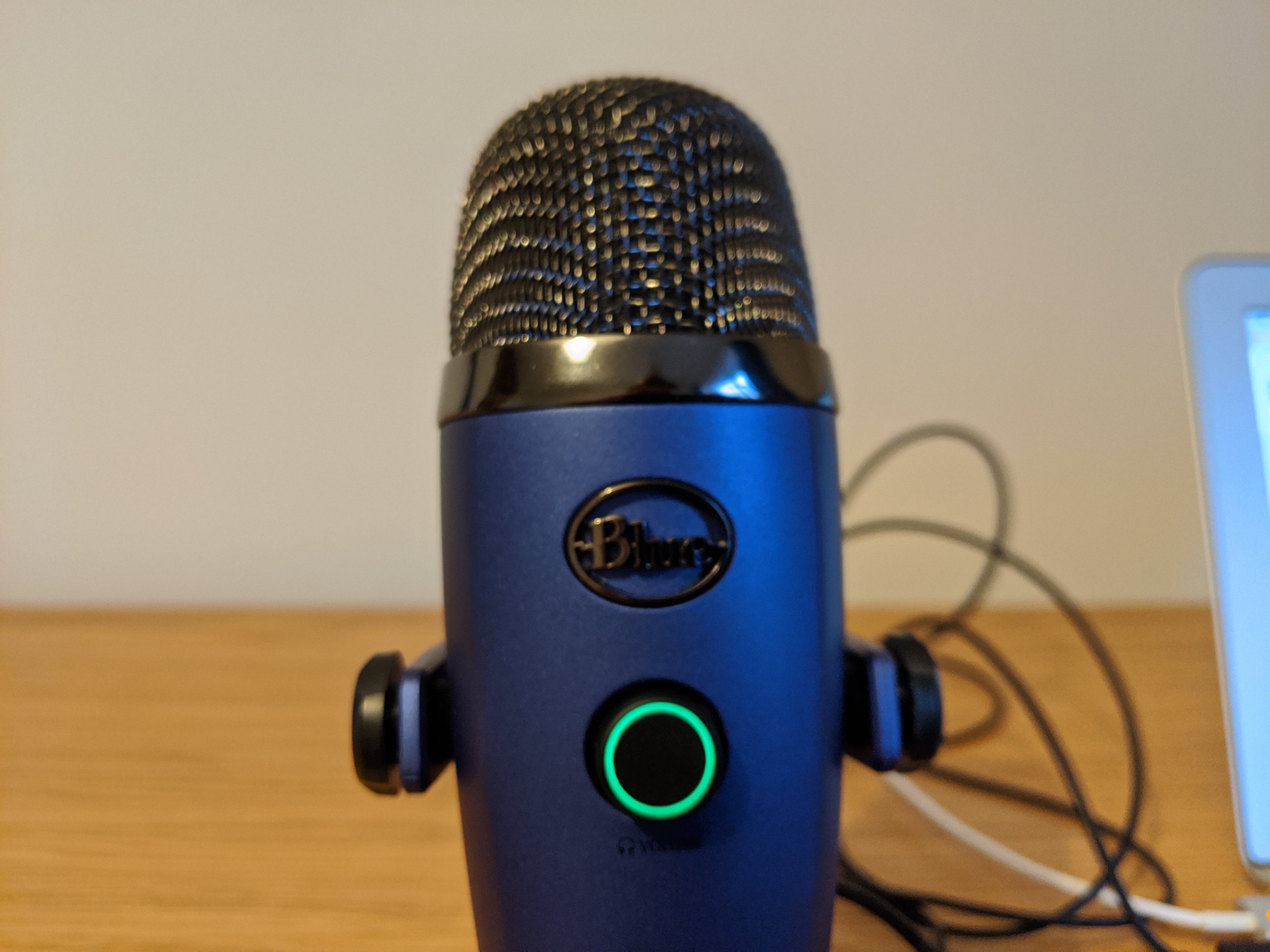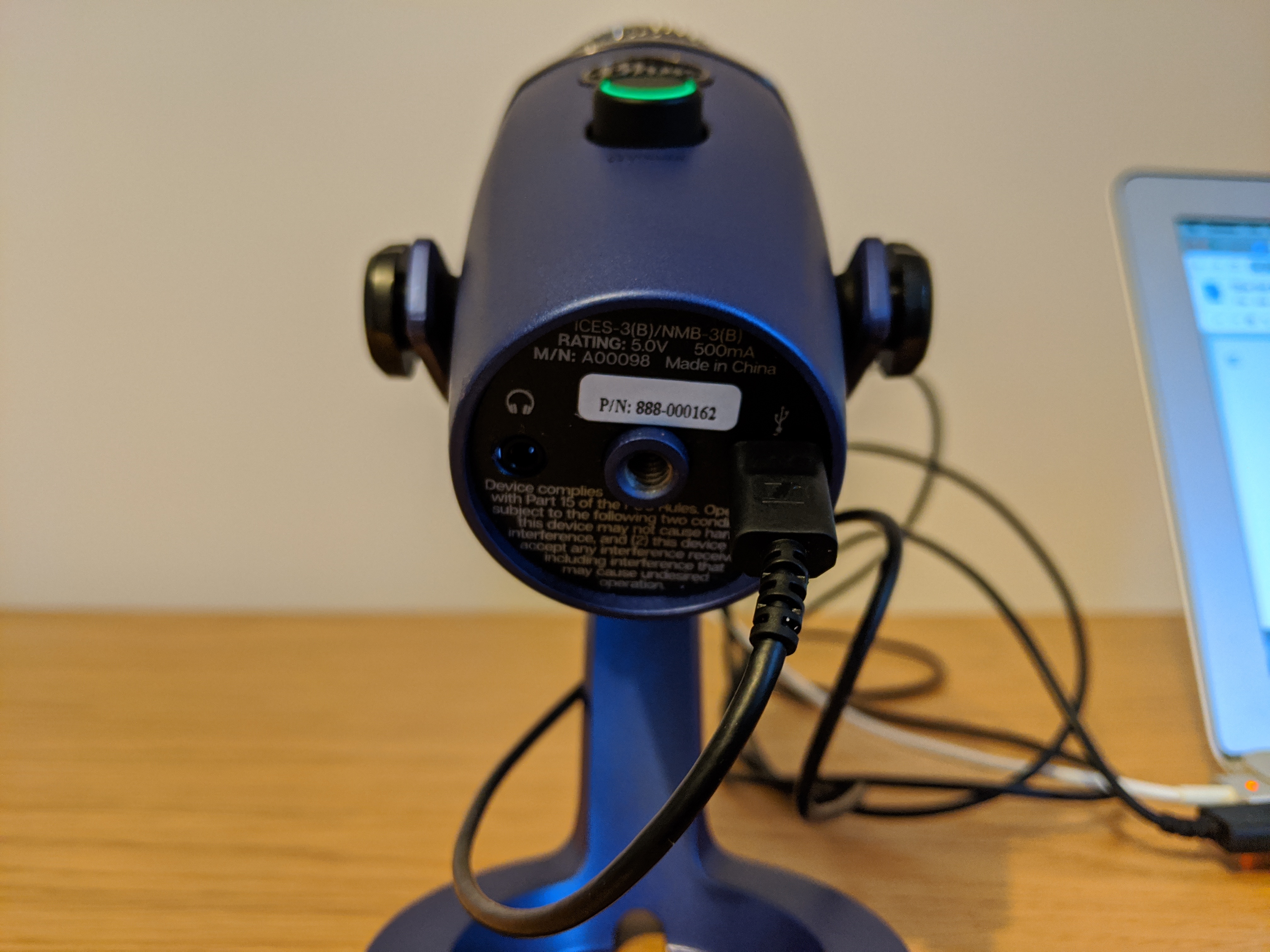Tom's Hardware Verdict
At the expense of a couple of extra polar patterns, the Blue Yeti Nano is a fantastic way to get that clean, refined Yeti sound for less than other mics in the lineup.
Pros
- +
Same Yeti sound for less
- +
Very portable
- +
Choice of colors
- +
Illuminated control dial
Cons
- -
Only two polar patterns
- -
Front dial feels loose
- -
Flimsy ports
- -
Standard Yeti isn’t much costlier
Why you can trust Tom's Hardware
You probably know all about the Blue Yeti. One of the best gaming microphones for streamers, it’s every bit as ubiquitous on the desks of streamers and influencers as Airpods are in the ears of athletes getting off the team bus. The mic’s earned that visibility and longevity with a fantastic and affordable sound packaged up in a durable and stylish capsule that doesn’t yell “gamer!”
In addition to the popular Blue Yeti ($130 as of writing), there’s the more premium Blue Yeti X ($170) But there are reasons to opt for a USB mic other than Blue’s most high-end, especially if you’re looking for the same sound for less money. Enter the Blue Yeti Nano ($100).
At 3 inches shorter than the Yeti X and less than half as heavy, the Yeti Nano is a deeply cute variant of the mythical mammal. The Yeti Nano’s also much more viable as a portable option. So, wait, is there any reason not to buy the Yeti Nano instead of the bigger mics? Well, Elgato’s Wave:3 ($160) also trims the fat away and brings big bonuses, like a powerful software suite and anti-peaking tech, so the fight’s going to be close.
Blue Yeti Nano Specs
| Frequency Response Range | 20 Hz-20 KHz | Row 0 - Cell 2 |
| Sample/Bitrate | 48 kHz/24-bit | Row 1 - Cell 2 |
| Polar Patterns | Cardioid, omnidirectional | Row 2 - Cell 2 |
| Dimensions (extended in stand, LxWxH) | 4.29 x 3.78 x 8.31 inches (10.9 x 9.6 x 21.1cm | Row 3 - Cell 2 |
| Weight (microphone and stand) | 1.39 pounds (0.63 kg) | Row 4 - Cell 2 |
| Headphone Amplifier impedance | 16 Ohms | Row 5 - Cell 2 |
| Extra | MicroUSB to USB cable, removable stand, boom arm adapter | Row 6 - Cell 2 |
Design of Blue Yeti Nano



At 1.39 pounds with its stand, the Yeti Nano lives up to its diminutive name. The standard Yeti weighs 3.4 pounds. I’ve carried both models in a backpack before heading out to events or recording sessions, and the lighter build of the Yeti Nano is a boon. If you do a lot of location broadcasts or just go to a friends’ house once a week to record the latest episode of your Narcos fan podcast, you’ll appreciate the weight and slimmer dimensions (4.29 x 3.78 x 8.31 inches).
In direct comparison, the Wave:3 is taller and will take up more space in your backpack, but it is slightly lighter (1.29 pounds, 6 x 2.6 x 1.6 inches). But the differences aren’t great enough for you to discount one over the other.
Despite its small stature, Yeti Nano didn’t lose any of its stability on the stand or reassuring tank-like construction finish after a few weeks. The mic feels like it could take a drop or two without showing any adverse effects.
In terms of its shape, this is really more like a smaller version of the Blue Yeti X than the Blue Yeti. Like the newer Yeti X, the Yeti Nano’s more cuboid in shape than the rounded-off Yeti and features chromed gunmetal trim around the mic capsule and on each of the Blue logos (at the front of the mic and rear of the stand). Get up close and you’ll notice every fingerprint, but they look great on camera for having this combination of matte and shiny materials.
Get Tom's Hardware's best news and in-depth reviews, straight to your inbox.
Although the Yeti Nano doesn’t feature a readout on the front dial letting you know where your gain level is or monitoring volume like the Yeti X does, the small mic is illuminated to let you know when it’s picking up and when it’s muted. A simple button press toggles between them. Like a lot of Yeti models we’ve tested though, the finish of this dial is disappointing. There’s a lot of loose wiggle to it, briefly letting down the facade that this is a much more expensive mic than its $99 price tag dictates.
After using several Blue mics in the long-term now, I’ve picked up on a consistent problem across all models. Their MicroUSB and MiniUSB ports are very easy to damage. The black bottom plate on this Yeti Nano model wasn’t properly lined up, so you have to force cables in to make a connection. And it doesn’t take that many knocks before the cable -- or worse, the input -- become damaged.
The Yeti Nano’s available in your choice of four colors, each finished to a pleasing matte metallic effect. That might seem like a small point, but those who sweat the details of the setup and surroundings they broadcast will appreciate having choices.
Sound Quality of Blue Yeti Nano
Time for the Yeti Nano’s party trick: It’s almost indiscernible from the Yeti X. I’ll go even further, actually: using cardioid mode, the same ambient environment, distance from the mic and gain level into the same DAW (digital audio workstation), it is indiscernible. You could record pickups for a podcast or video voiceover you initially recorded using the Yeti X with this, and your editor wouldn’t bat an eye. Even above its sprightlier size and weight, this is the single biggest reason to buy a Yeti Nano.
The Yeti Nano (and all its bigger siblings) gets you a professional sound with very little tinkering. It’s personal preference, but we double anyone would say something’s lacking in the way the Yeti Nano captures vocals.
Maybe you’d opt for a pricier Wave:3 because of its anti-peak feature that the Yeti Nano lacks or because its software work better for you. Or maybe you prefer the Beyerdynamic FOX or HyperX’s Quadcast, both of which sound noticeably different to Yeti’s trademark warm tone without explicitly exceeding it.
Most people, though, particularly those looking to spend $99 or less, just want to sound professional. They don’t want their audience to have to endure tinny vocals or pops or distortion from their mouth-breathing. And that’s what the Yeti Nano gives you, right out of the box.
What it doesn’t get you is a range of polar patterns to play around with, like the Yeti X does. The Yeti X has four in total, comprising cardioid, omnidirectional, bidirectional and stereo, using four capsules.
The Yeti Nano’s deficit in polar patterns will only turn off people looking to apply their USB mic to a home recording application, which is itself a compromise, since XLR mics would do the job better. While it’s nice to have a few extra patterns in your back pocket, I can count the number of times I’ve actually used the stereo mode since testing on one hand -- well, it’s zero, so technically I don’t even need that.
Features and Software of Blue Yeti Nano
The hardware features aren’t going to bamboozle anyone. A simple mic monitoring setup via 3.5mm connection lets you listen to your signal before it hits your DAW, and a button on the back of the Yeti Nano switches between polar patterns. Master those and the mute button, and you know the Yeti Nano’s physical properties inside out.
I didn’t miss the Yeti X’s extra functionality on the dial; although, if I messed around with gain levels more I might. I tend to leave the gain where it is for long periods. But if you record different voices or in different spaces, the Yeti X may be handier for you.
The Elgato Wave:3’s anti-peak tech is also missed in every mic in its wake now. Hearing a hard limiter kick in and compress the hell out of everything isn’t exactly music to the ears. But it’s better than distortion and having to do a re-record or, indeed, losing Twitch viewers whose ears you just blew out.
It’s nice that Blue includes a boom arm adapter with the Yeti Nano. That’s because the small and slim mic sits lower on the desk than your typical microphone and further away from your mouth. Blue makes its own very fancy-looking boom arm to combat this. It lets you reposition the mic right by your face wherever you are. Plus, the adapter works with any Blue Yeti model.
Over on the software side, Blue’s Sherpa software covers the bare minimum -- gain, mic mute, polar pattern, sample and bit rate -- but at least it does so clearly and attractively. Many of those parameters are physically adjustable without software, of course, so it’s by no means essential you download Sherpa and clog up your drive some more.
Bottom Line
The very best streamer mics are still way short of an XLR studio model, but also a tenth of the price and better-suited to their intended purpose. The Blue Yeti Nano stands out in this market, particularly among its pricier siblings, by offering near-identical sound at a lower cost.
The reasons not to buy a Yeti Nano extend across the lines-up, and they’re all QA-related. See: wobbly, cheap dial and flimsy ports that are easily damaged. Elgato’s Wave:3 does better in this department and also innovates with great software and firmware features. The similarly priced, soda can-sized Razer Seiren X is eminently portable. But Razer’s mic doesn’t quite have the same instantly accessible polished sound as Blue’s Yeti line. On the other hand, the Seiren X is available in black, white or pink (or “quartz pink,” as Razer calls it).
If you can live without a couple of polar patterns that most people don’t use, the Yeti Nano is an industry standard-caliber mic for spoken word vocals that’s easy to carry.
